Outdoor yoga is one of the healthiest exercises that also gives social and mental benefits, but practicing outside is not like practicing in your living room or a studio. Your choice of mat makes all the difference, and today I’m here to help you choose the best one for the job.
If you’re just here for the best yoga mats, below are my top picks. Note: We get commissions for purchases made through links in this article.
Best Overall: Gaiam Essentials Thick Yoga Mat (extra cushioning, tough, easy-clean)
Best for Joint Support: Retrospec Solana Yoga Mat (1-inch thickness, great grip)
Best for Sweaty Sessions: Reetual Premium Hot Yoga Mat (MicroGrip, machine washable, eco-conscious)
Best for Space: Extra Wide Yoga Mat (huge surface, anti-slip, alignment lines)
I’ve been through enough cracked mats, mats that were too thin or muddy disasters to know what really matters when practicing yoga outside. Here’s what I wish I’d known sooner, plus top picks I am sure you will love – we’ll start with more details about the latter, since that’s what you’ve most likely came here for.
Here’s Why Outdoor Yoga Needs a Special Mat
Yoga is one of the few exercises you can do just about anywhere, and I have to be honest and say that on a few occasions, all I needed was my beach towel to get it right.
However, when you take it outdoors, you’re dealing with uneven ground, moisture, sun, dirt, wind, and various other things. The mat you’re using indoor may slide around or start to break down quickly after being exposed to the elements.
If you’re planning outdoor sessions – even just in your backyard or on the balcony – you will need a mat specifically created for the extra challenge, one that also keeps you more comfortable, so that you can focus on your yoga session.
My Recommended Yoga Mats for Practicing Outside
Let’s go a bit more in-depth with my top choices recommended below and learn what truly makes them tick – and perfect choices overall. Just grab the one that fits your needs best and you’re all set!
1. Gaiam Essentials Thick Yoga Mat – Best Overall
If you want unbeatable comfort and all-purpose use, this is my best pick. Really, you can just grab this one and you’re all set.
The Gaiam Essentials mat features 10mm of high-density foam, making it one of the most joint-friendly mats I’ve tried. It absorbs shock on rough grass or even patio tiles, and its textured surface keeps slipping in check. It’s extremely comfortable and offers a great price/quality ratio.
It’s also easy to wipe clean and doesn’t come with the overwhelming “chemical” smell that cheaper mats sometimes have (which is an added bonus, because you don’t want those chemicals entering your body in the first place). Great for yoga, Pilates, or stretching outdoors, it also comes with an easy-cinch carrying strap.
Check it at Amazon. (Multiple colors available)
2. Retrospec Solana Yoga Mat
If you suffer from joint pain or have sensitive knees, worry not! The Solana’s ultra-thick (1-inch) foam will provide all the comfort you need when practicing outside.
The extra density is super-welcome and helps with balance even on bumpy ground, and the mat’s grippy surface stays put during fast flows. Free of latex, phthalates, and heavy metals, this mat is safer for sensitive skin and noses.
Cleanup is a breeze: soap, water, air dry. You also get a durable carrying strap, and it holds up well to regular use outdoors.
Check it at Amazon. (available in 10 colors)
3. Reetual Premium Yoga Mat
For anyone who struggles with sweaty hands or does hot yoga outside (or just wants a mat that actually gets grippier the more you sweat), this one is a game changer.
The Reetual mat uses MicroGrip tech: it’s smooth when dry, but gets stickier as you warm up. Machine washable for deep cleaning, and totally free from PVC, latex, or harsh chemicals. The mat is reversible and designed for eco-conscious yogis (Not to mention the fact that the prints look amazing on grass!)
4. Extra Wide Yoga Mat
Tired of feeling boxed in? The extra-wide mat gives you 50% more space than standard mats (36” vs 24” wide). It’s perfect for bigger bodies, or anyone who likes room to spread out.
Made from recyclable Recfoam, it’s a better pick for the planet and has alignment marks for perfect positioning. It’s lightweight despite the size, and the dual-sided surface gives you grip on any ground – grass, sand, or patio. The included strap works for carrying or as a stretching tool.
Make sure you get the Extra Cushion variant, as it is thicker and more comfortable.
How to Choose the Right Outdoor Yoga Mat
While it seems pretty straightforward, there are some things you should keep in mind when choosing your outdoor yoga mat. Here’s what to consider that you’ve got one of the most important parts – the gear – covered:
Consider Your Needs
Body type: The type of yoga mat you need, to some extent, depends on your body type. If you’ve got a slimmer body type, you could benefit from thicker or padded mats because your bony figure won’t be able to cushion your moves.
If your joints are sore often, a thicker mat can be easier on your joints. Or if you’re quite tall, a standard yoga mat may not cut it and you might need to look for a super-stretched variety – or a wider one, like my fourth recommendation above.
Yoga type: The type of yoga you are practicing can also influence what kind of mat you need. If you’re still new to yoga, a basic, non-expensive mat (like the budget-friendly ones recommended above) will do because you’re still deciding if you are committing or not.
If you’re doing yoga with complex movements, a mat with added traction is recommended to keep your limbs in place. There are also “sweatproof” mats for those who engage in a form of “hot yoga” or any practice with intense poses to prevent damage.
Location: where you’re practicing your outdoor yoga makes a big difference in which type of mat you should buy. Here’s what to consider:
- Grass and parks: Most mats work, but padded or foam mats shine for shock absorption and comfort.
- Beach or sand: Look for mats that shake off sand easily, with a surface that won’t collect grit or hold moisture.
- Concrete, decks, or patios: Never use a thin mat directly on rough concrete. It’ll wear out fast and won’t protect your joints/feel uncomfortable.
- Travel and portability: Lightweight mats are easier to carry to the park or on trips. Some roll up super compact; others come with handy straps or cases. Pick those.
And if you’re still unsure about practicing Yoga outdoors, check out my article about all its benefits.
Materials used
You will always want chemical-free mats that are comfortable and smell free. There are various options, listed below:
- PVC Mats: Durable, affordable, easy to clean, and usually offer top-tier stickiness. However, they can get slippery when wet and aren’t eco-friendly.
- Natural Rubber: Grippy, dense, often biodegradable. Many people prefer the “earthy” feel, but these mats can be heavy and may have a specific odor at first.
- TPE (Thermoplastic Elastomer): Lightweight, often more eco-conscious than PVC, and sometimes recyclable. Not as durable as PVC but a nice balance for more casual use or if you don’t mind replacing more often.
- Cotton: Soft, natural, and offers good grip when dry, but cotton soaks up moisture and sweat fast. Unless you love doing laundry, this may not be ideal for the park.
- Padded Mats: Comfy for sitting/lying down, but can be harder to clean and may not grip well on damp ground.
- Non-slip/Sticky Mats: These are your go-to for sweaty hands or rigorous practice. Just make sure the anti-slip is still effective when there’s grass, dirt, or moisture involved.
Eco-Friendly Choices
If sustainability matters to you (and it should!), look for mats made from recycled or biodegradable materials (TPE, natural rubber, or Recfoam). Avoid mats with strong chemical odors, as they often indicate less eco-conscious production and can be unhealthy for your body too.
Check for certifications or brands that offer recycling programs for old mats. If your old mat has seen better days, consider repurposing it as a kneeling pad for gardening or a liner for pet crates instead of throwing it out.
Accessories & Pro Tips for Outdoor Yoga
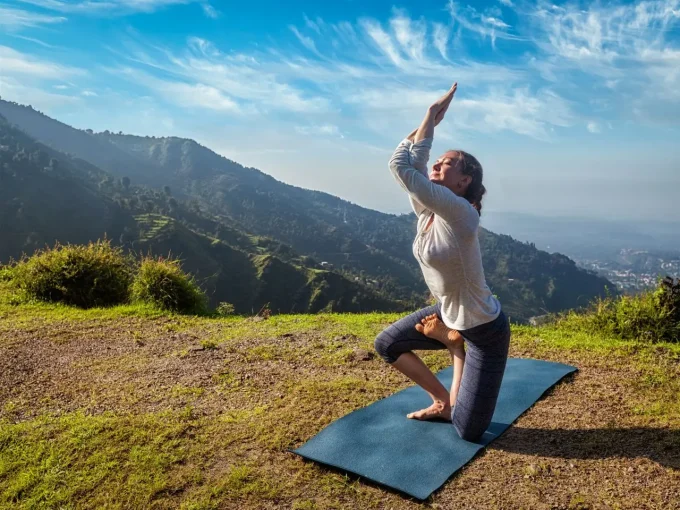
Apart from using one of the recommended mats above, here are a few things you should always consider when it comes to practicing yoga outside, if you want the best possible experience overall.
1. First, you need carrying straps & cases. These are a must-have if you walk or bike to your yoga spot.
2. Next, bring extra towels. A yoga towel can go over your mat if you sweat a lot, or to keep sand/dirt off the surface. Or under the mat if it’s a bit damp or if you need extra thickness (although you’ll also need to wash the towel more often).
3. Wipes/spray: Carry a small spray bottle of diluted vinegar or mat cleaner to quickly wipe down after outdoor sessions, after you remove any dirt/sand first.
4. Bring your weights! On windy days, use small ankle weights or water bottles to pin down the mat corners.
5. Make sure you have enough bug spray and sunscreen. Outdoor yoga is better with fewer distractions (and no sunburn – read more about the best UV index for tanning here). And try to always stay in a shaded area.
In conclusion
Taking your practice outdoors is a great way to enhance your yoga sessions. However, this also means that you should have the appropriate yoga mat with you.
In general, a thicker mat is ideal if you are practicing outdoors, especially on a hard or uneven surface. With that said, I sure hope this guide has convinced you to try outdoor yoga (if you haven’t been doing it already) and helped you choose the right mat for it as well.
If you’ve tried any of these mats or have your own tips for practicing outside, I’d love to hear about it. And if this guide helped you, please share it with fellow yogis or anyone looking to breathe new life into their practice.

Mark Foster loves to push his limits when it comes to survival in the wilderness. He might go for a 30-days adventure without any food or equipment except for a survival kit and a knife. We should mention that his survival kit has 122 items in it, so he know what he is doing. Mark is working on his book to share with the world all his experience gained during those brave adventures.
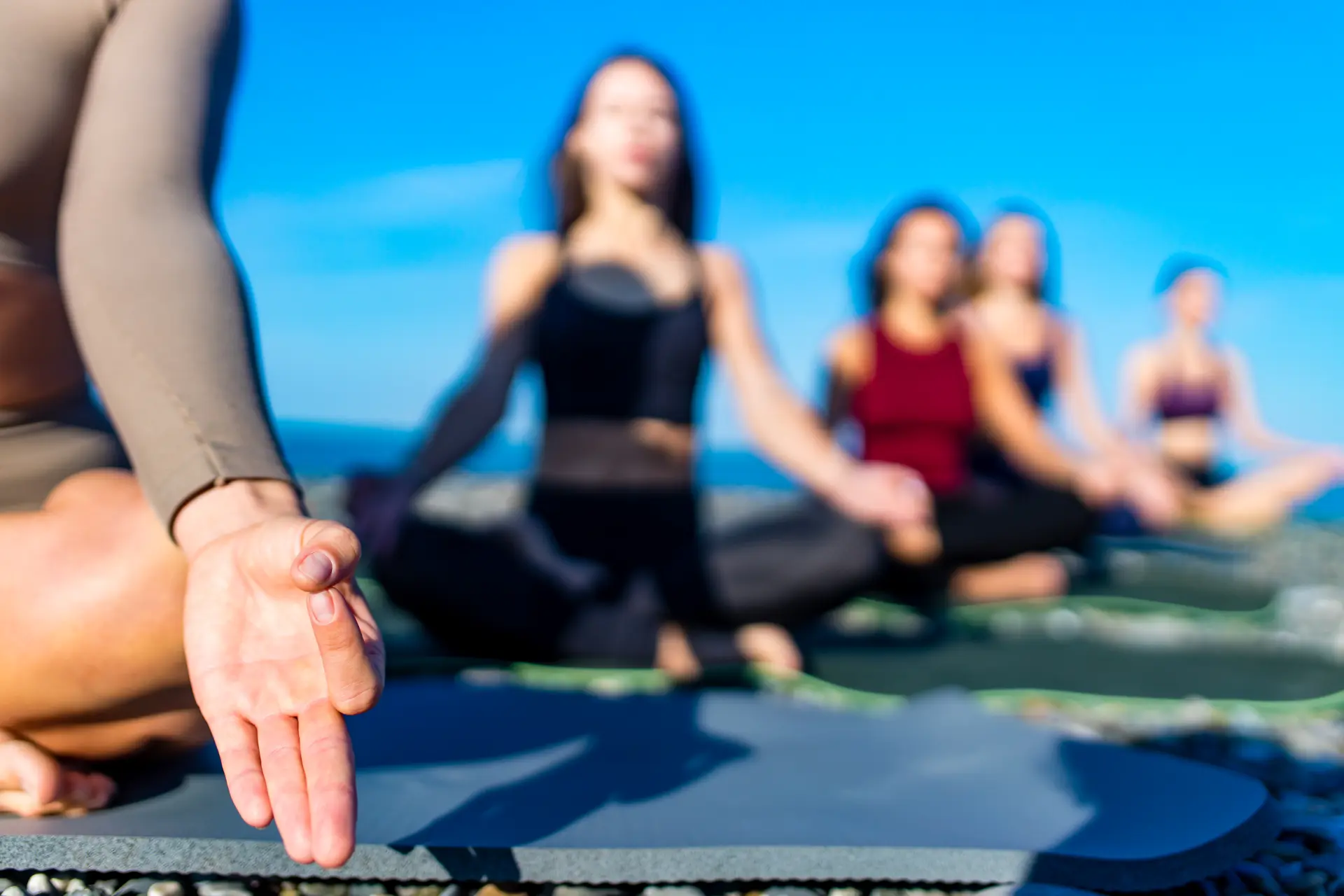
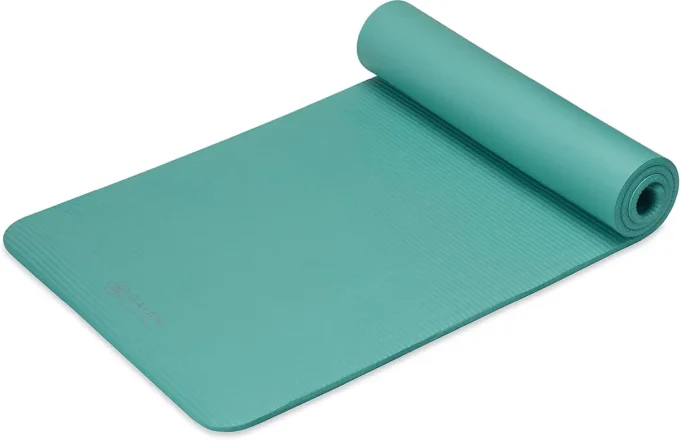
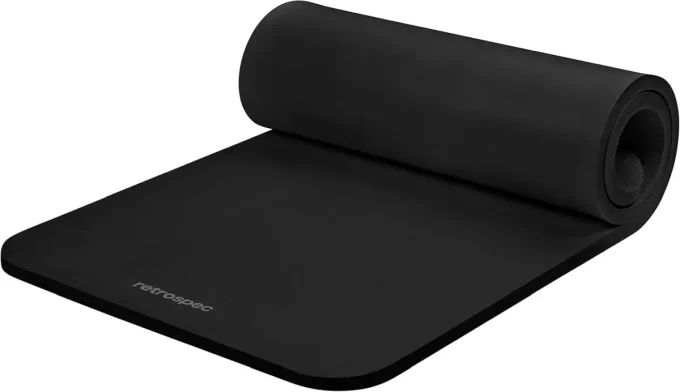
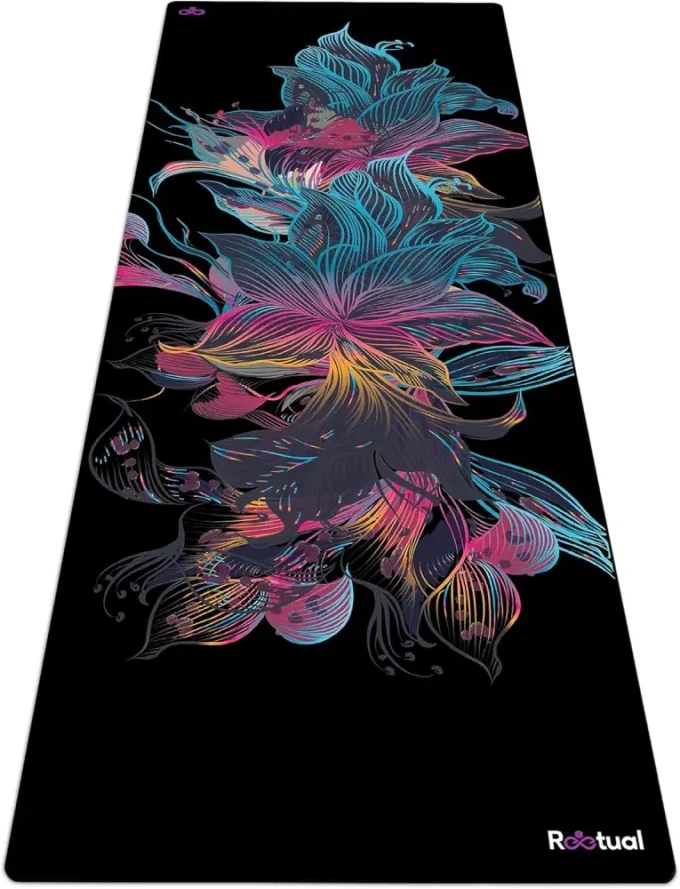
My question is purely out of curiosity to see if anyone else has had the same problem. My cats EAT my yoga mat. Doesn’t matter what kind of where I put it. They have a radar and they just eat it. It’s very frustrating I’ve had to replace three already. Any useful tips?
I completely agree. Thickness of the mat is super important. I have some back issues and I know that when I use a thin, cheap mat I am paying for it in Shavasana. I tried using a small towel in the small of my back and that did nothing. Your tips are great and I’m definitely going to follow them next time I buy a mat!
Some behavior modification may be necessary here Julie! I’m curious, did they get sick after because rubber can make them ill. You can spray something on the mat to make it bitter.
Thanks for this great comment Rebecca and I’m pleased that you find this article useful. You are right, though – finding a decent yoga mat may be daunting. But like most buyers today, including myself, I make sure to read reviews first and examine product specifications before making a decision. Then, there’s my family and friends who can always provide valuable input so I don’t make a mistake and buy a lemon. 🙂